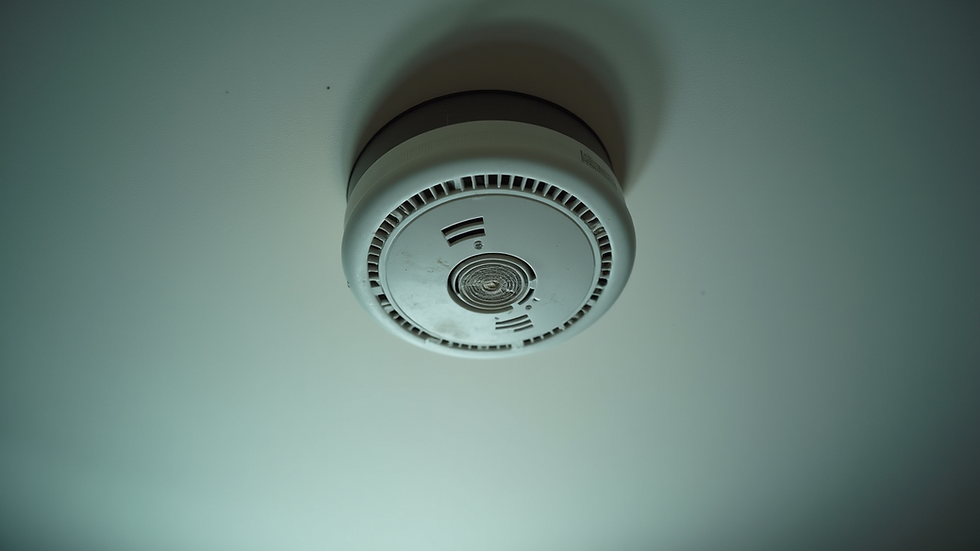Essential Skills Everyone Should Learn for Safety
- john1852
- Jun 13
- 4 min read
In today's fast-paced world, safety has become paramount. Whether at home, work, or in public, the ability to respond effectively in emergency situations can make all the difference. This blog post delves into essential skills everyone should learn for safety, emphasizing the importance of being prepared. Knowing how to act in various situations can save lives and protect those around you.
First Aid Skills
First aid skills are fundamental for anyone who wants to be prepared for emergencies. They equip you with the knowledge of how to respond when someone is injured or suddenly falls ill. Basic first aid training covers several critical areas, from CPR to wound care. This knowledge not only enhances personal safety but also empowers you to assist others in crisis situations.

Knowing how to perform CPR (Cardiopulmonary Resuscitation) is one of the most crucial first aid skills you can learn. In many cases, this technique can keep a person alive until emergency services arrive. According to the American Heart Association, immediate CPR can double or triple a person's chance of survival after cardiac arrest. CPR is not just for medical professionals; anyone can learn it. Many organizations offer first aid training courses that include CPR instruction, making it accessible to the general public.
Another necessary skill is the ability to manage bleeding. Whether it's a minor cut or a significant injury, understanding how to control bleeding is vital. Applying pressure to a wound, elevating the injured area, and, if necessary, applying a tourniquet are essential techniques everyone should know. Blood loss can happen quickly, and knowing how to handle it may save a life.
Understanding Home Safety Basics
Safety begins at home. It’s essential to recognize potential hazards and take preventive measures. Common household injuries can stem from slips, trips, and falls, poisoning, or electrical malfunctions.
Start by ensuring that commonly used items are safely stored away. For instance, keep cleaning supplies and medications secured and out of reach of children. Regularly check smoke detectors and replace batteries as needed.

Statistics show that unintentional injuries are the leading cause of death for children aged one to four. Thus, child-proofing a home can effectively reduce risk. Investing a bit of time and effort into making your home safer can prevent many accidents, especially for families with young children.
Fire Safety Fundamentals
Fire safety is another critical area where first aid skills come into play. Understanding how to react during a fire emergency can help protect lives. First, make sure your home has smoke detectors and fire extinguishers. Regularly testing smoke detectors increases safety; ideally, do this every month.
Create an escape plan for your household. Practice the plan with your family, ensuring everyone knows multiple exit routes and a safe meeting place outside.

Fire safety education is crucial. Teaching family members not only about prevention but also how to respond to a fire can be life-saving. This knowledge includes knowing how to use a fire extinguisher effectively—remember the acronym PASS: Pull, Aim, Squeeze, and Sweep. This straightforward technique can help put out small fires before they escalate.
Basic Self-Defense Techniques
While not all emergencies are medical or environmental, understanding basic self-defense techniques can be essential for personal safety. Engaging in a self-defense class can enhance your awareness of surroundings and teach you how to fend off potential threats.
Statistics show that learning self-defense can increase confidence and reduce fear in uncomfortable situations. It empowers individuals, particularly women, to protect themselves. The techniques offered in these classes vary greatly, from simple escape methods to more complex maneuvers.

It's beneficial to reinforce self-defense skills through practice. Participating in regular training sessions helps build muscle memory, making responses instinctive during tense situations. Remember, while self-defense is vital, maintaining a mindset of avoidance and de-escalation is equally important.
Communication Skills in Emergencies
Effective communication is key during emergencies. The ability to relay information accurately and calmly can ensure the right help arrives swiftly.
In any emergency situation, gather essential information before contacting emergency services. This includes the type of incident, the number of people affected, and any visible injuries. Clarity in your description can significantly expedite the response time.
Take time to practice how you would communicate in emergencies. Role-playing scenarios with family or friends can enhance preparedness. Technology can also be an ally: familiarize yourself with emergency services apps that can connect you quickly to help.
In addition, learning basic sign language can be beneficial if you encounter someone who may not hear your verbal cues in a crisis.
Lifelong Learning for Safety
Acquiring essential safety skills is an ongoing journey. Exploring available resources such as first aid training courses enhances your knowledge and abilities. These courses not only develop your skills but also foster a sense of responsibility towards the safety of others.
Moreover, engaging with community safety programs or local health services can deepen your understanding of how to respond in emergencies.

Do not hesitate to refresh your knowledge periodically. Many organizations offer refresher courses to ensure your skills remain sharp. Investing time in these activities can be life-saving, not just for you but for those around you.
Acquiring first aid skills and understanding safety essentials not only prepares you for emergencies but also plays a vital role in developing a culture of safety within your community. Everyone can contribute to creating a secure environment where individuals feel empowered to help one another.
By fostering knowledge—even in seemingly small ways— we build a connected network of support, safety, and readiness. So, take that first step today. Enroll in a course, practice with your family, and take the initiative to make safety a priority in your life.





Comments